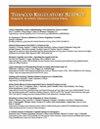The Spatial Correlation Effect of Hunan Green Finance Efficiency and the Green and Low-consumption Development of Tobacco Industry Based on Social Network Analysis
4区 医学
引用次数: 0
Abstract
The efficiency of green finance for promoting the upgrading of regional industrial structure shows a correlation effect. In this paper, 14 cities and prefectures in Hunan, China, are taken as regional cases, and relevant data from 2010 to 2017 are analyzed. The three-stage DEA model, modified gravity model, and social network analysis are employed to measure the efficiency of Hunan green finance in promoting the energy saving and emission reduction of tobacco industry, industrial upgrading and its spatial network relationship. The results show that Changsha, Hengyang, Zhangjiajie, Loudi, and other cities and prefectures have high efficiency, while other cities and prefectures have relatively low efficiency. Clear spatial agglomerations exist between cities and states, depicting a complex spatial network structure. Their spatial network connections have increased, and agglomerations are closely linked, forming four major sections: “two-way overflow”, “net overflow”, “net income”, and “broker”. Cities and states with these four major sectors have played different roles in the spatial network, demonstrating their respective roles and orientations. This suggests that when inter-regional governments formulate green finance policies for promoting the upgrading of the industrial structure, they are supposed to not only concentrate on coordinated advancement, but they should also adjust measures to local conditions. Tobacco industry should also actively implement the concept of green development, pay close attention to equipment energy-saving technological transformation, and improve energy management through lean management.基于社会网络分析的湖南绿色金融效率与烟草业绿色低耗发展的空间关联效应
绿色金融促进区域产业结构升级的效率呈现相关效应。本文以湖南省14个地市为区域案例,对2010 - 2017年的相关数据进行分析。采用三阶段DEA模型、修正引力模型和社会网络分析测度湖南绿色金融在促进烟草产业节能减排、产业升级及其空间网络关系方面的效率。结果表明,长沙、衡阳、张家界、娄底等地市效率较高,其他地市效率相对较低。城市与州之间存在明显的空间集聚,形成复杂的空间网络结构。它们的空间网络联系增强,集聚联系紧密,形成了“双向溢出”、“净溢出”、“净收入”和“中介”四大板块。这四大板块所在的城市和州在空间网络中扮演着不同的角色,显示出各自的角色和定位。这说明,区域间政府在制定促进产业结构升级的绿色金融政策时,既要注重协调推进,又要因地制宜。烟草行业也要积极贯彻绿色发展理念,狠抓设备节能技术改造,通过精益管理提高能源管理水平。
本文章由计算机程序翻译,如有差异,请以英文原文为准。
求助全文
约1分钟内获得全文
求助全文

 求助内容:
求助内容: 应助结果提醒方式:
应助结果提醒方式:


